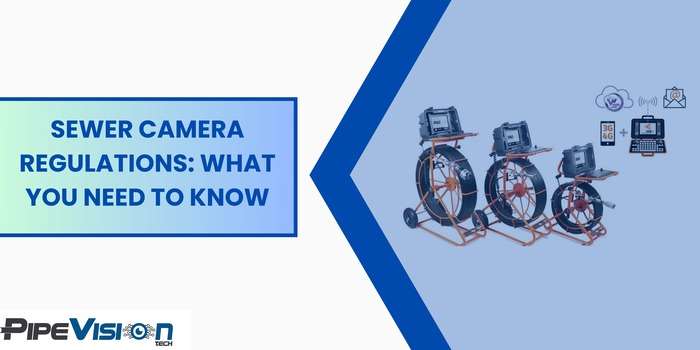Blogs, Sewer pipe camera
Sewer Camera Regulations: What You Need to Know
Introduction
Sewer inspections involve more than just technical know-how; they require adherence to industry regulations governing sewer camera usage. In this comprehensive guide, we’ll explore the ins and outs of sewer camera regulations —equipping you with the knowledge to ensure your inspections not only meet but exceed legal requirements.
Understanding Sewer Camera Regulations
Why Regulations Matter
Compliance with regulations is crucial for both ethical and legal reasons. It not only ensures the safety of the plumbing infrastructure but also protects the environment and public health.
Industry Standards and Best Practices
Familiarize yourself with industry standards and best practices that go hand-in-hand with regulations. This includes guidelines on equipment specifications, inspection procedures, and data storage.
Key Components of Sewer Camera Regulations
Component 1: Licensing and Certification
Requirement: Operators must possess the necessary licenses and certifications to operate sewer cameras.
Best Practice: Regularly update certifications to stay abreast of evolving industry standards.
Component 2: Data Privacy and Security
Requirement: Safeguarding sensitive data captured during inspections is a non-negotiable aspect of regulations.
Best Practice: Employ secure data storage systems and encryption protocols to protect client information.
Component 3: Environmental Considerations
Requirement: Adhere to regulations that minimize environmental impact during sewer inspections.
Best Practice: Implement eco-friendly practices, such as using biodegradable camera lubricants.
Component 4: Reporting and Documentation
Requirement: Accurate and detailed reporting is a cornerstone of sewer camera regulations.
Best Practice: Utilize comprehensive reporting tools to document inspection findings thoroughly.
Staying Compliant: Best Practices
Best Practice 1: Regular Training
Ensure your team undergoes regular training to stay informed about the latest regulations and best practices in sewer camera usage.
Best Practice 2: Periodic Audits
Conduct internal audits to assess compliance with regulations, identifying areas for improvement.
Best Practice 3: Collaboration with Authorities
Establish open lines of communication with regulatory authorities to seek clarification on evolving standards and ensure compliance.
Conclusion
Navigating sewer camera regulations is a responsibility that comes with the privilege of conducting inspections. By staying informed, adhering to standards, and implementing best practices, you contribute to a safer, more sustainable plumbing industry.
PipeVisionTech: Committed to Compliance and Excellence
For state-of-the-art sewer camera solutions that align with industry regulations, turn to PipeVisionTech. Committed to compliance and excellence, PipeVisionTech provides cutting-edge products that elevate your sewer inspections to new heights.
Frequently Asked Questions
Q1: How often do sewer camera regulations change?
Regulations can evolve, so it’s crucial to stay updated. Check with relevant authorities regularly for any amendments.
Q2: What happens if I don’t comply with sewer camera regulations?
Non-compliance can result in legal consequences, fines, and potential damage to your reputation. Always prioritize adherence to regulations.
Q3: Are there international standards for sewer camera usage?
While some standards may have international applicability, specific regulations often vary by region. Familiarize yourself with local requirements.
Q4: Can I use any sewer camera for inspections, or are there specific approved models?
Regulations may specify approved models or set criteria for acceptable equipment. Check with local authorities for guidance.
Q5: How can I ensure my team stays updated on the latest regulations?
Enroll your team in regular training programs, subscribe to industry publications, and maintain open communication with regulatory bodies for timely updates.


